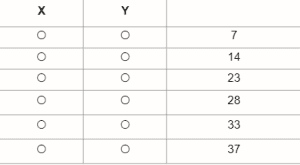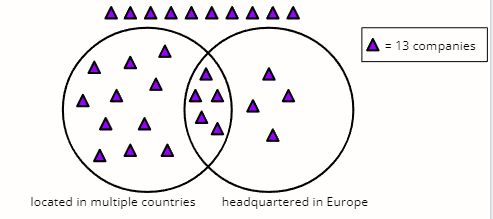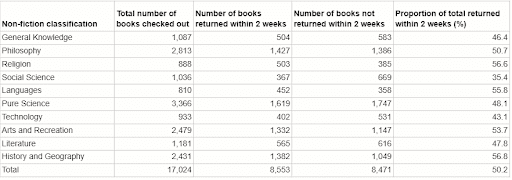The Executive Assessment exam is considered to be a relatively short exam for admission to an EMBA program, but it manages to cover a wide range of topics. That being said, knowing the structure of the exam, as well as what to expect on the test day is a huge part of your EA prep.
The Integrated Reasoning is one of the three sections on the EA exam and it is scored from 0 to 18. It requires a complex preparation that will help you develop verbal and quantitative skills, the ability to read charts and graphs, and actually get insights from those charts. In this article, we are going to share with you everything you need to know about the EA Integrated Reasoning section – from what this section consists of to some important aspects of the preparation that you need to consider.
1. What is the Structure of the EA Integrated Reasoning Section?
The EA Integrated Reasoning section is divided into 4 categories – Graphics Interpretation, Table Analysis, Two-Part Analysis, and Multi-Source Reasoning. Each of the categories contains 12 questions. A test-taker has 30 minutes to answer the 12 questions or about 2.5 minutes per question. The 12 questions are divided into two modules of 6 questions each. Depending on the test-taker’s performance in the first module of questions, the difficulty of the questions in the second module varies. The more complex questions you answer in the first module, the more complex you will get in the second module, and eventually, you can get a higher score.
2. What is the Scoring on the EA Integrated Reasoning Section?
All three sections on the EA exam are scored in the same way. The official score on each section is ranged between 0 and 20. The score from each section has the same weight in the EA total score and the final grade.
3. What are the different types of questions?
There are the four types of Integrated Reasoning questions included in the EA exam:
-
Two-part Analysis
The questions in this category ask you to select two answers from a set of choices presented in a table. The two answers have to be related to each other somehow, so you need to look for some analogy or connection between them. The questions will be quantitative or verbal, a.k.a. based on a mathematical problem or a scenario. Although the questions in this part may seem relatively easy to test-takers, they can be tricky. Sometimes, in these types of problems, you may have very little information to find the relationship between the two answers. In such cases, you will need to select the only options available that fit that relationship, which may be rather challenging.
Example:
Consider the sets S, T and U, where
S = {35, 14, 64, 23, 49, 67}
T = {x, 35, 14, 64, 23, 49, 67} and
U = {y, 35, 14, 64, 23, 49, 67}
The mean of T is 5 less than the mean of S. The median of U is 9 less than the median of S.
Select the value of x and the value of y consistent with the statements given. Make two selections, one in each column.
-
Graphics Interpretation
The questions in this category ask you to work with some information presented in a graph, chart, or some other form of data-visualization (i.e. bar-graph, stacked-bar graph, x-y scatter plot, etc.). You have to analyze the information and select the right answers based on it. The question addresses math concepts such as statistics, correlation, ratios, etc. In this part, it is important to learn how these concepts look graphically and get used to reading the graphs or charts.
Example:

Refer to the pictograph of a survey of attendees at the annual meeting of an international hotels group. Each symbol represents 13 companies in a sample of 390. Use the drop-down menus to complete each statement according to the information presented in the diagram. If one company is selected at random from the 390 surveyed, the chance that the company will be located in only one nation or headquartered outside of Europe or both is _____
A: 1 out of 6
B: 1 out of 3
C: 2 out of 3
D: 5 out of 6
If one company is selected at random from the 390 surveyed, the chance that the company will be both located in a single country and headquartered outside of Europe is _____
A: 1 out of 6
B: 1 out of 3
C: 2 out of 3
D: 5 out of 6
-
Table Analysis
The questions in this category present data in the form of a table and require you to answer Yes/No or True/False questions about the data in the table. You can sort the columns of the table in different ways to make their reading and understanding easier. That is why being able to sort functions effectively could be an essential skill you need to answer the Table Analysis questions. The first step to the solution of each problem is exactly to decide which “sort” function you are going to use. In terms of the topics, one can expect them to be somehow similar to those covered in the Graphics Interpretation category.
Example:
For each of the following statements, select Yes if the statement is true based solely on the information in the table; otherwise select No.

The table shows circulation data, by non-fiction classification, for books in a certain library system in November 2003. Percentages are given to the nearest 0.1 percent.

-
Multi-Source Reasoning
The questions in this category present some information in the form of multiple texts as each text will be based on a single subject. You need to answer questions that are based on that specific text. You have to work with multiple texts which will include some sort of data. Being able to understand this data will be very helpful to you because you can go ahead and use the insights from that data to answer the questions. As you might have guessed, this category requires you to mix quantitative, verbal, and data-interpretation skills. You have to try to look beyond the most obvious tab and seek information that could be hidden somewhere in the paragraph.
Example:
Definition of musician: Any person who uses a device created to produce sound through blowing air, vibrating a string, striking a surface, or electronic means, or uses parts of their own body, with the intent of creating sound for the purpose of entertainment, communication, self-improvement, education, or production of an emotional response. This definition of musician fails to capture the standard concept of a musician in that it allows for the inclusion of some things that are not ordinarily thought of as musicians, for example, people who _____,
A: play many instruments
B: perform their music as a paid profession
C: turn on a stereo for their own enjoyment
D: write music for the purpose of others performing it
E: work as piano movers
F: teach the history of music
and excludes some things that are ordinarily thought of as musicians, for example, people who _____.
A: play many instruments
B: perform their music as a paid profession
C: turn on a stereo for their own enjoyment
D: write music for the purpose of others performing it
E: work as piano movers
F: teach the history of music
Conclusion
Understanding the structure, scoring, and different types of questions of the EA Integrated Reasoning section will help you to prepare better for the section as you will know what to expect and work on. It is important to develop a strategy on how to tackle the complex and multi-layered problems included in this section. You need to work on your ability to read and analyze graphs and charts, find and evaluate relationships in data, synthesize information from various texts, etc. We know that this may be a challenging task! At Apex we are more than happy to support you on your EA journey and assist you in every step of the process. You can sign-up for a 30-minute complimentary consultation call with one of our instructors who can help you ace any section on your EA exam!
Contributor: Diana Materova
